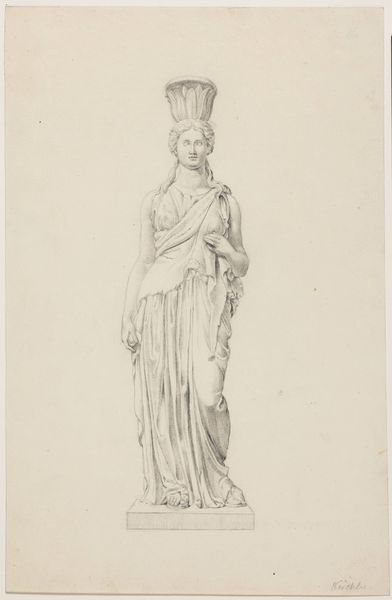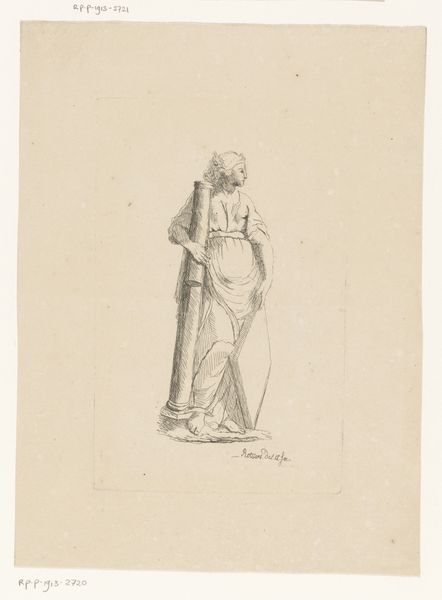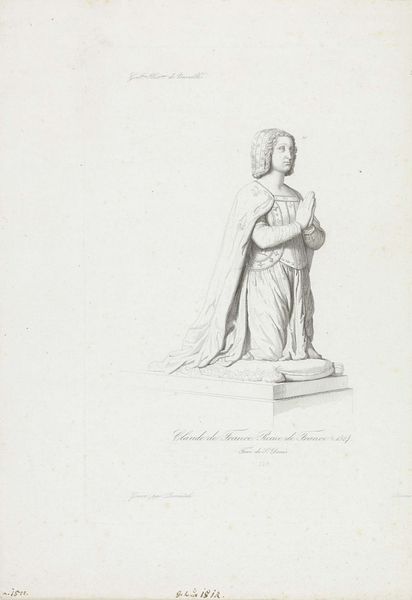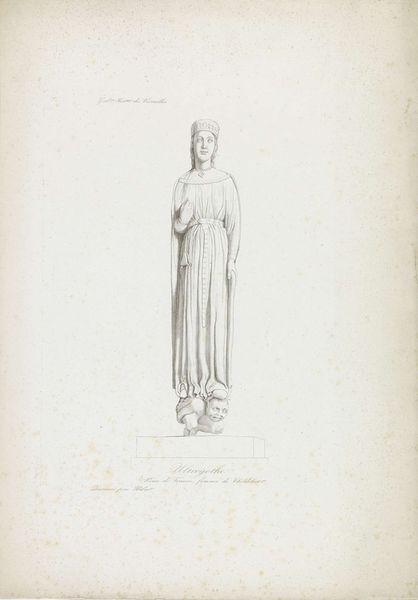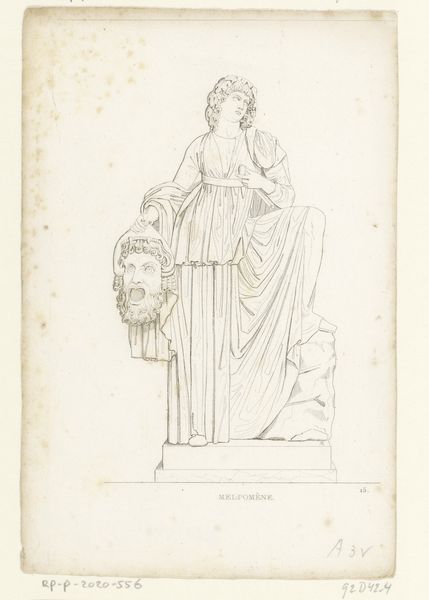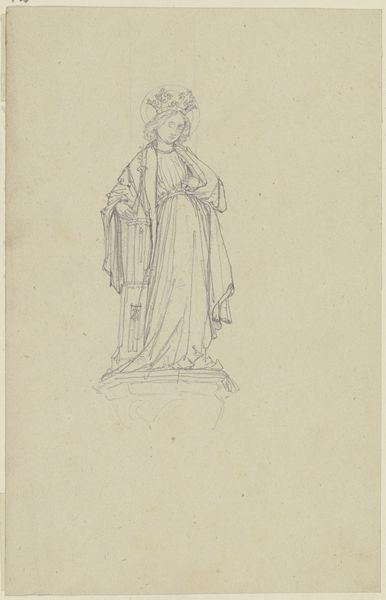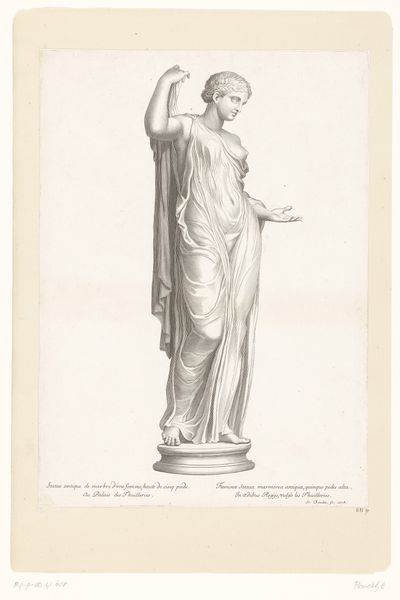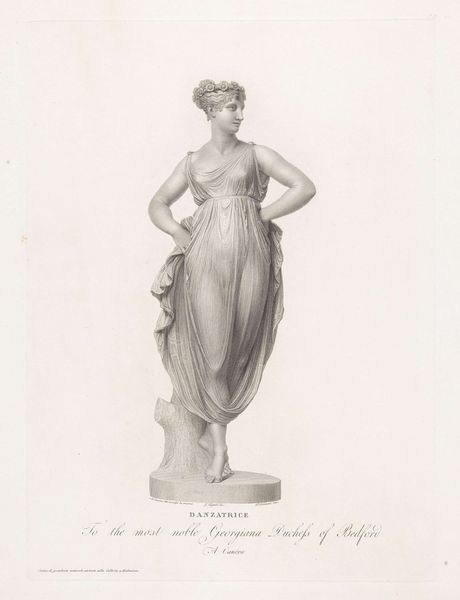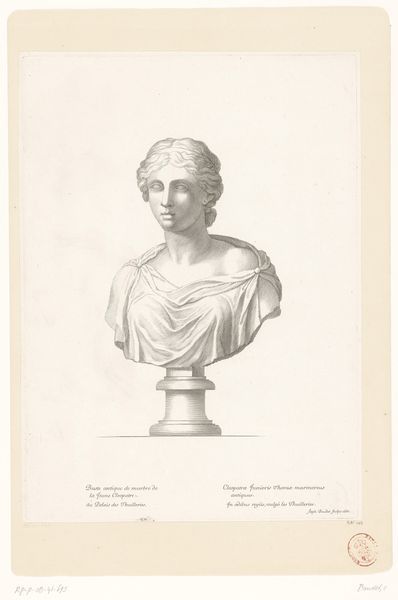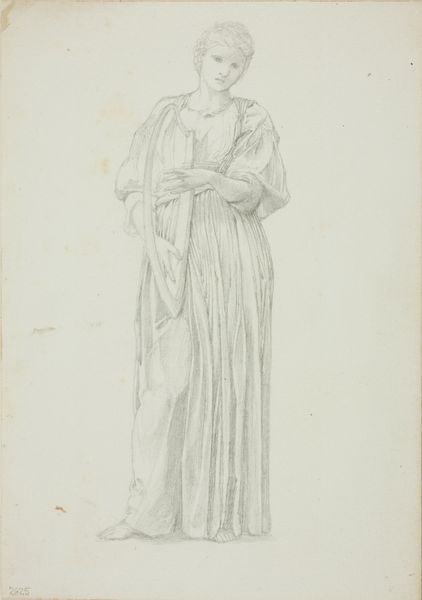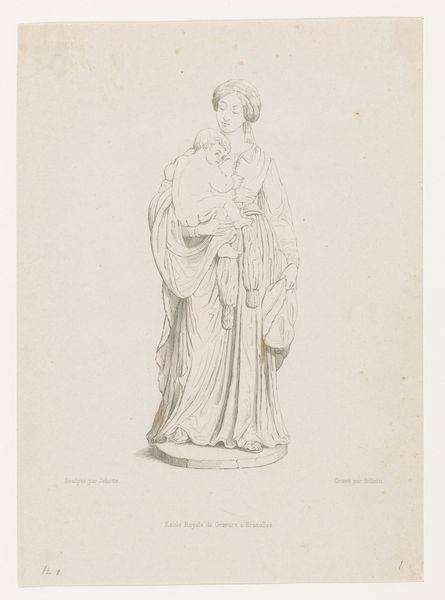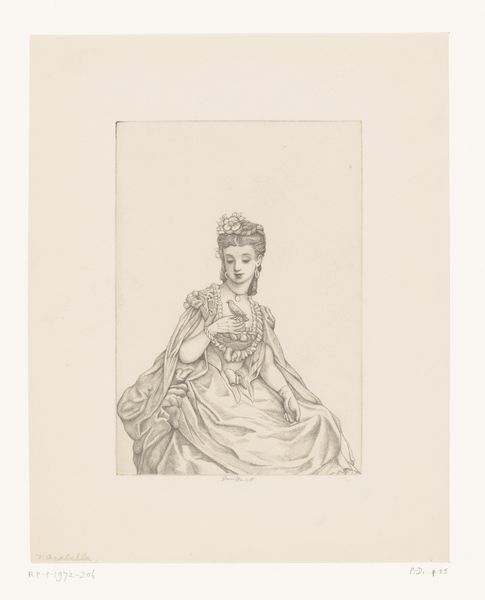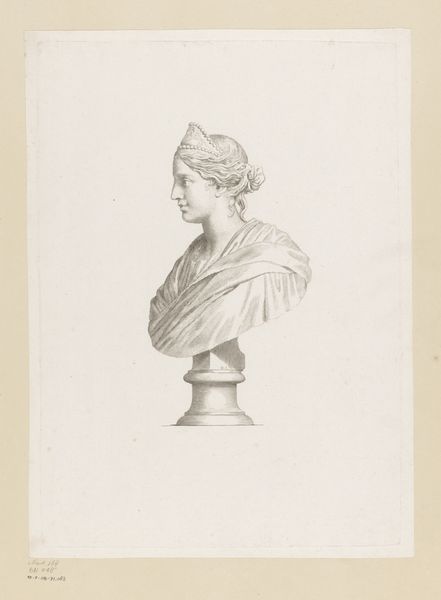
drawing, pencil
#
portrait
#
pencil drawn
#
drawing
#
pencil sketch
#
figuration
#
pencil
#
academic-art
#
realism
Dimensions: height 257 mm, width 246 mm
Copyright: Rijks Museum: Open Domain
Curator: Look closely at this intriguing pencil drawing, "Portret van Béatrix van Bourbon," created by Ephraïm Conquy between 1838 and 1841. Editor: My initial reaction is one of serenity. The figure, possibly a sculpture, appears in prayer, giving off a feeling of piety, perhaps even solemnity, enhanced by the gray tones of the pencil. Curator: It's compelling how Conquy, primarily known for his history paintings, turned his attention here to portraying a three-dimensional object on a two-dimensional plane. What does that shift tell us about academic artistic practice in the early 19th century? Editor: Precisely! He presents not merely a portrait but a reproduction of a sculpted effigy. This places the work within a discourse around representation, documentation, and the rise of historicism— the artist almost acting as a kind of archivist. And observe how meticulously the folds of the drapery are rendered; they testify to Conquy's draughtsmanship. What kind of paper was common at the time for works like this? Curator: Usually a fine laid paper; the drawing probably would have been executed in stages, possibly employing preparatory sketches to determine accurate proportions and capturing details using hard and soft pencils. Conquy most likely had access to a wide variety of pencils during this time to create different values. What can we learn about this piece regarding the historical representation of female figures within court? Editor: Considering it’s Bourbon royalty, it's interesting. While the portrait projects power, the prayerful gesture creates a narrative around humility, or at least publicly performed piety—essential during a period of shifting political allegiances and increasing republican sentiment following the Restoration era in France and the Low Countries. The display and dissemination of such an image played a crucial role. Curator: These pencil drawings acted like surrogates. Though static objects themselves, these images were actively circulated to shape collective memory around monarchy, class, and history. Conquy’s pencil here almost anticipates photography. Editor: Absolutely. And so, considering the context, looking again at the nuances of medium, process and social functions is revealing about the image’s political work at the time, isn't it? Curator: Yes, and it reinforces the ongoing importance of appreciating an artwork through the lens of production as well as reception.
Comments
No comments
Be the first to comment and join the conversation on the ultimate creative platform.
